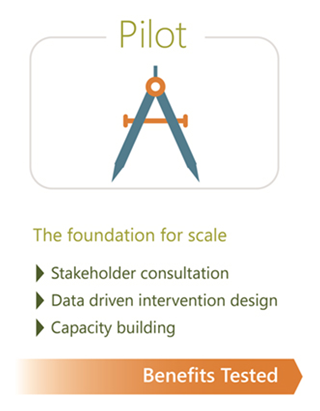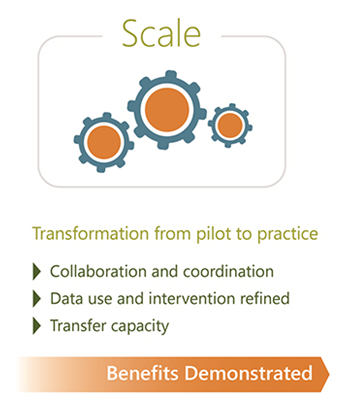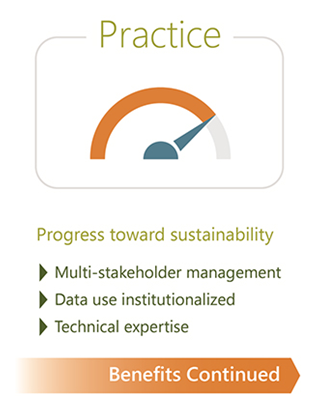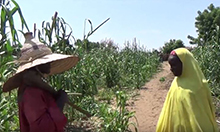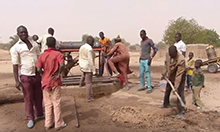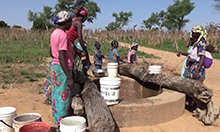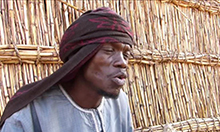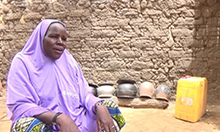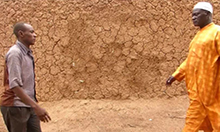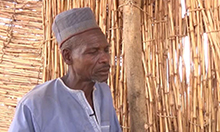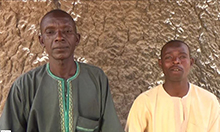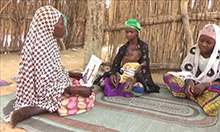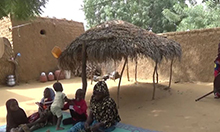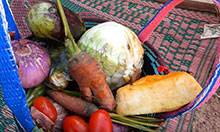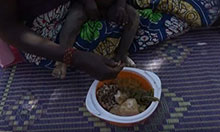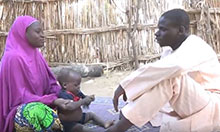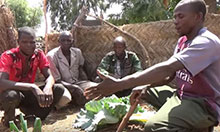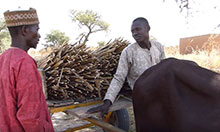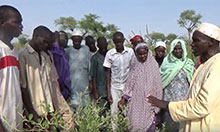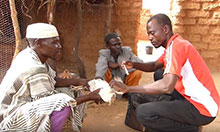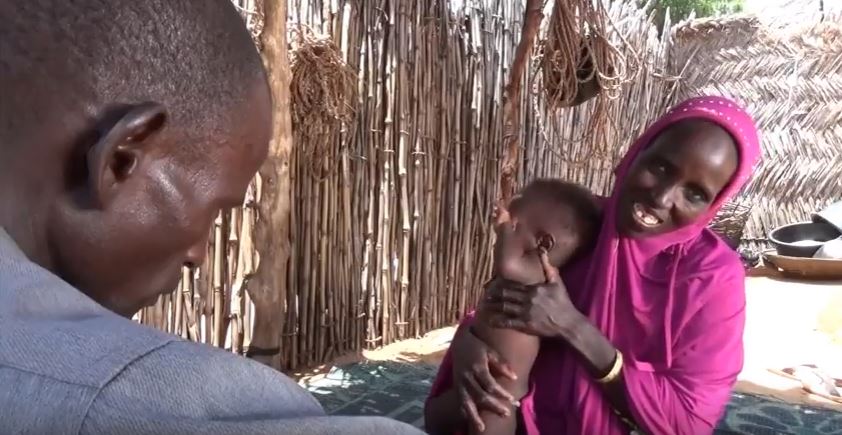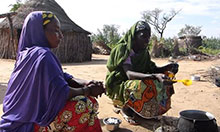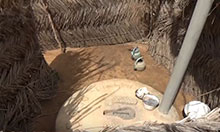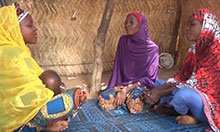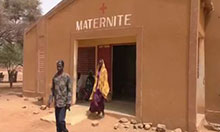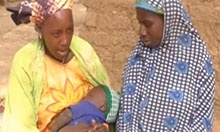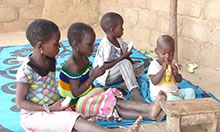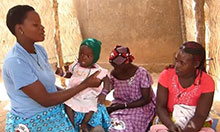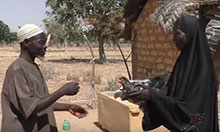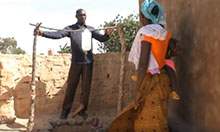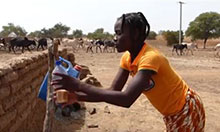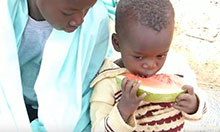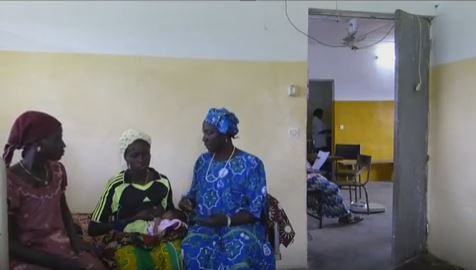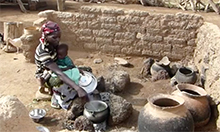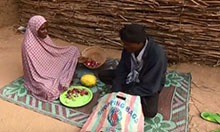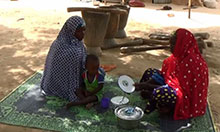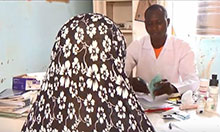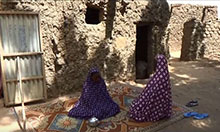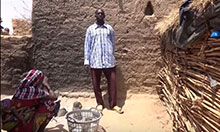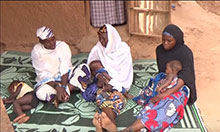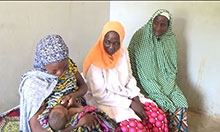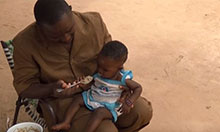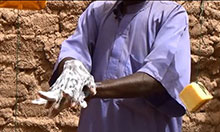From Pilot to Practice
Using community-led videos to transform attitudes and practices in the African Sahel.
In 2014, SPRING began working within vulnerable populations in Niger and Burkina Faso to implement peer-based nutrition and hygiene video messaging. This community-led video approach was created by SPRING and Digital Green in India and adapted to change behaviors, engage communities, and strengthen partnerships across the African Sahel.
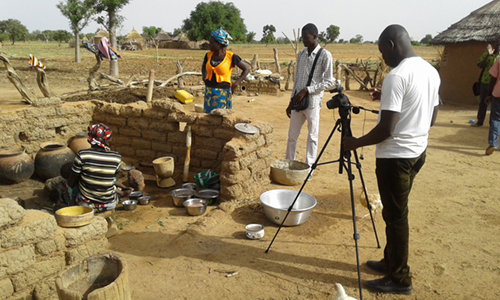
Video for Communities, by Communities
Community video is a social and behavior change approach that influences local groups and community members to model good nutrition-related practices. When people see their peers engaged in these behaviors, they are more likely to also practice them.
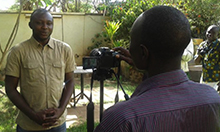
Community Media for Nutrition
SPRING is involved in community media efforts around the globe. Our programming combines nutrition messaging with creative, community-based technology platforms.
We are using an evidence-based, partner-driven approach to implement community video from a pilot program, through scale-up, to sustainable practice.
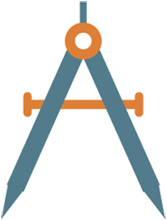 Pilot: The Foundation for Scale
Pilot: The Foundation for Scale
To build evidence for using community video in the Sahel, SPRING conducted formative research and introduced community video in twenty villages in Niger, relying on data and a flexible methodology to rapidly adjust the approach.
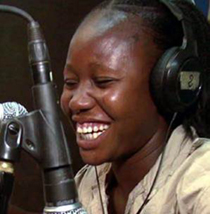
SBCC in the Sahel
In 2014, SPRING conducted a landscape analysis of SBCC in Niger and Burkina Faso to explore how community-led media could improve health outcomes and to identify the nutrition and hygiene interventions with the greatest benefit to mothers, infants, and young children.
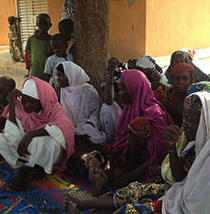
Situational Analysis and Formative Research in Maradi, Niger
Before we began developing videos, SPRING examined the socio-cultural and economic context, as well as existing nutrition and hygiene behaviors in order to identify topics and practices that were culturally resonant and would have the greatest impact in the Sahel.
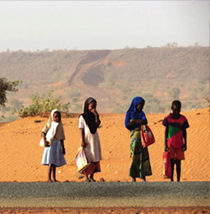
Seeing is Believing
During the first year of video dissemination, SPRING evaluated how well the approach was accepted in Niger and assessed its potential for scale-up and sustainability. The results showed improvements in hygiene and nutrition behaviors, including handwashing and infant care.
Handwashing Behavior
Among households with a handwashing station, the percent that had soap and water increased from 73.8 at baseline to 96.2 at endline.
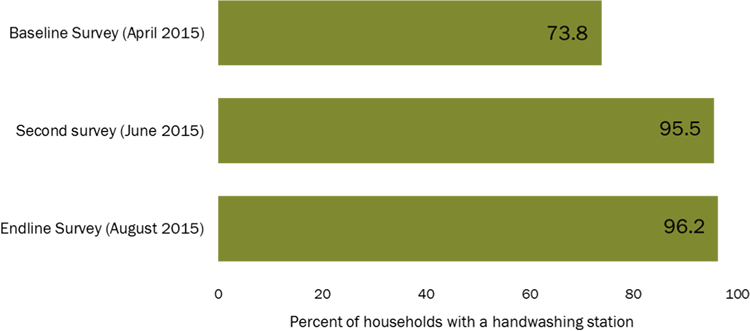
Responsive Feeding Behavior
Responsive feeding practices increased after exposure to the video.
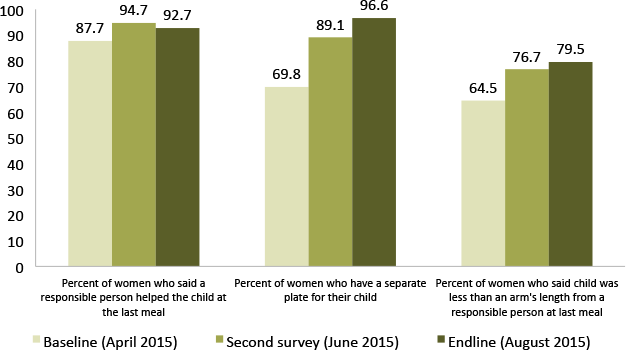
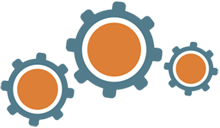 Scale: Transformation from Pilot to Practice
Scale: Transformation from Pilot to Practice
Incorporating the lessons learned during the pilot phase, SPRING expanded community video for nutrition from 20 to 115 villages in Niger and launched the community video approach in 25 villages in Burkina Faso.
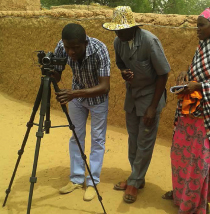
Engaging Entrepreneurs in Developing Community Videos for Nutrition
SPRING’s community video work in the Sahel involves the community at all stages of planning, developing, and disseminating videos. To ensure this capacity remains within the community, SPRING trained and equipped five video production “hubs” to localize video production.
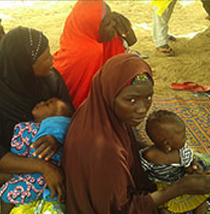
Concept Testing Tailors Community Videos to Local Context
Concept testing is a critical step in developing effective community videos. Feedback from participants helped SPRING to understand local behaviors and perceptions and then adjust the storylines.
 Practice: Progress Toward Sustainability
Practice: Progress Toward Sustainability
During the final phase of the project, SPRING continues to expand, developing new video production hubs, accruing partners, and expanding to a total of 246 villages in Niger and 90 villages in Burkina Faso. As the project comes to an end, we are creating tools and documenting the process to enable community-led video for nutrition to continue in our absence.
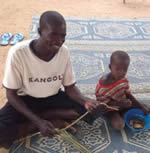
The Father Factor
To promote continued program learning, this report explains how the community video approach can be used to strengthen spousal communication and improve male involvement in MIYCN behaviors.
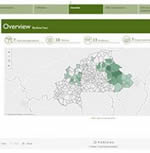
SPRING’s GIS Dashboard: A Tool to Explore Nutrition and WASH SBC Activities in the Sahel
SPRING collaborated with partners and organizations working on nutrition and WASH to collect commune-level data of SBC activities in the Sahel, and created these GIS Dashboards to visualize that information. These dashboards allow community members, stakeholders, and decision-makers to intuitively grasp the Sahel's complex social and behavior change landscape.
SPRING has demonstrated that community video is an effective and successful tool when implemented as part of a wider set of interventions in rural, chronically impoverished, and under-served communities in the Sahel. In addition to demonstrating that the approach is feasible at scale, SPRING has developed the tools needed to further implement community video in the Sahel and expand it elsewhere.
Watch the Videos
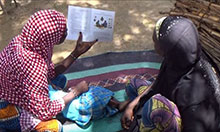
Community Video (Niger): How Can Working Parents Feed Their Young Children Frequently?
